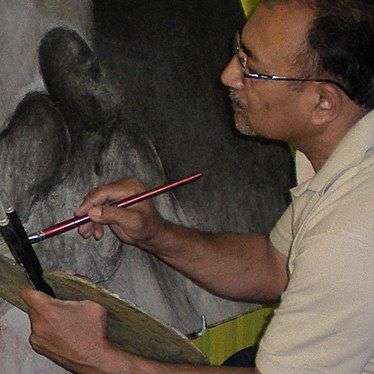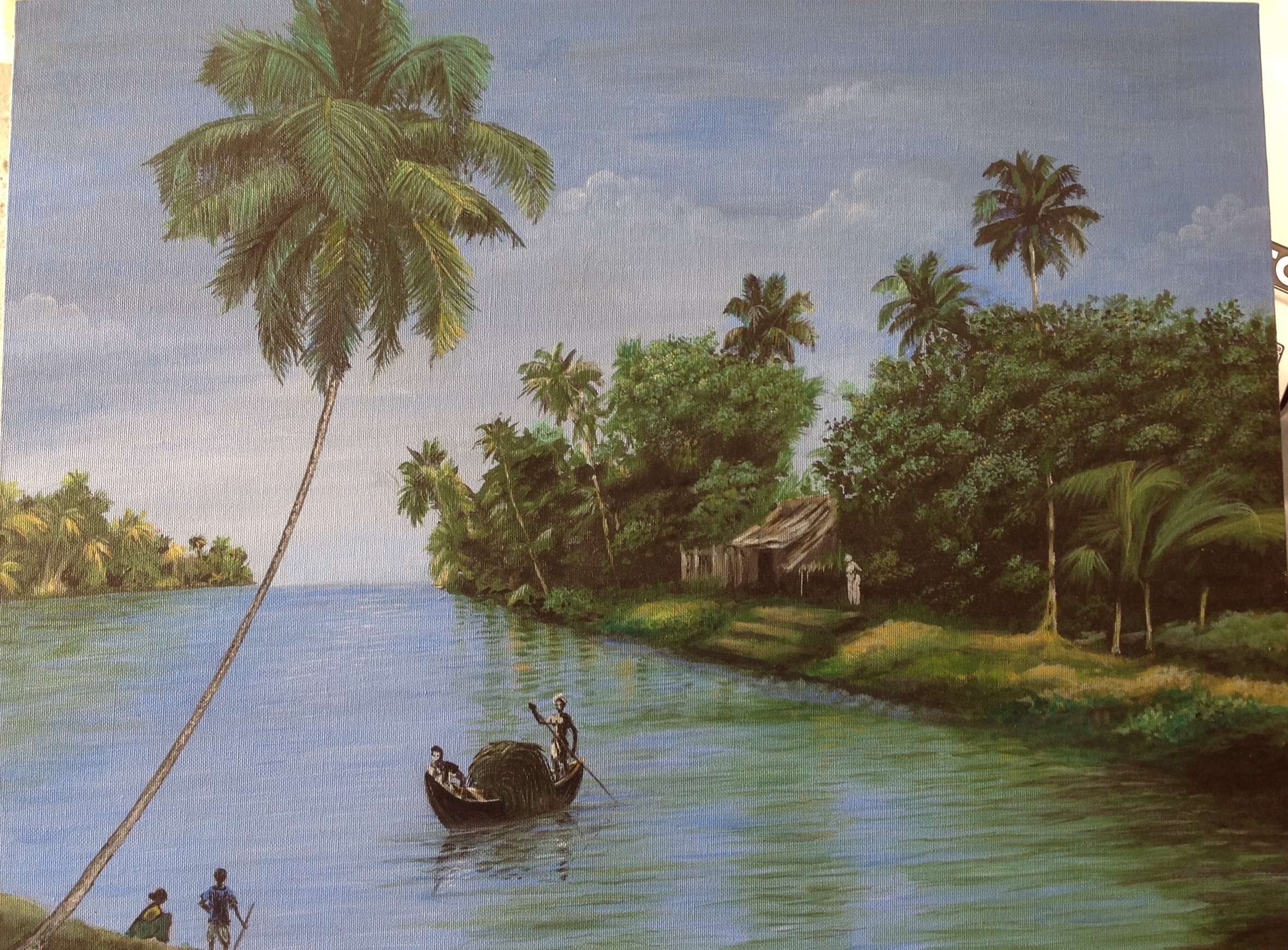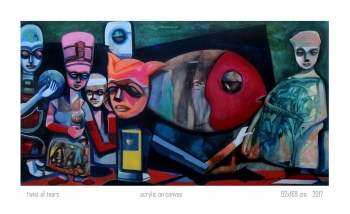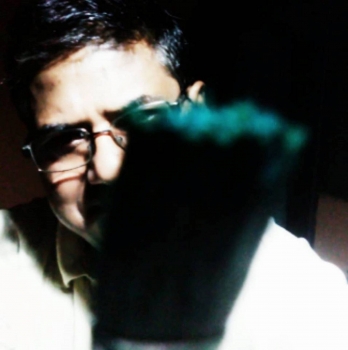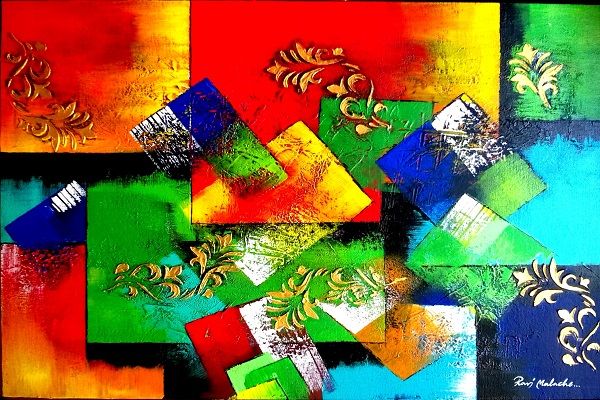
The art of painting is a song, lyrics of which are colours and its expression is its composition. The brush strokes are like notes of a piano leaving the onlookers mesmerized by its sharp and shallow dance. Art is the mirror of society. Therefore, it reflects and muses upon the state and mannerisms of society. Although it is just like any other materialistic thing, mere patterns and figures drawn on the canvas. But, it is a medium of affirmation and making your point vehemently.
Basis of differentiation in Paintings
Painting may have symbolical meanings i.e. visually they may seem ordinary but have hidden deep meanings. The purpose of art sometimes is purely aesthetic. It means that a painting may have been created just for pleasing the eyes or capturing the beauty and youth of its model. Paintings such as contemporary art paintings, abstract paintings, modern paintings may differ from each other on the basis of materials used in making the canvas. Regional and cultural differences play the main role in ascertaining this.
The base of a painting can be craved out from a firm material like wood, canvas, wall or from soft things like glass, paper, leaf, etc. Different types of Indian paintings can be identified from the use of colours. They may come from pigments extracted by natural things as done in traditional Indian paintings like Madhubani. Synthetic colours like oil-based, acrylics and pastel give a distinct appearance to an artwork. They vary in degrees of miscibility, drying time, and effect on different mediums. Incorporation of a particular base and choice of colours used reflects upon the cultural and ethnic identities of the maker and the society in which he resides.
Different Forms of Styles of Painting
1. Water Colour Painting
In the style of watercolor paintings, pigments suspended in water are applied on the canvas. Traditionally. The base of these paintings is made of paper. Though, papyrus, bark papers, plastics, vellum, leather, fabric, wood, and canvas can also be used as a base. To avoid distortion while painting, the base is often made entirely or partially with cotton. The colours are applied according to the requirement with different sizes of brushes. For this reason, it is also known as a Brush Painting. This style is widely practised in East Asia with regional variations.
Watercolour paints are made from four basic mediums: a colouring pigment which may be synthetic or naturally extracted, Gum Arabic to as a binding agent to suspend the insoluble pigment in addition to glycerin, ox gall, and honey. Preservatives are used to change the degree of viscosity, durability or transparency of the colour. Water is used to dilute the paint.
2. Oil Painting
Oil paint was first used as a medium of painting by painters of central Afghanistan in the 5th and 10th centuries. During middle ages, this technique travelled west and was extensively used due to its advantages over other prevalent mediums. The period of Rennaissance is known for its best works made in oil paintings on canvas. Like Da Vinci’s Mona Lisa is one of the best artworks painted in this style.
The oil used in this technique is used as a binding agent to the pigment. Walnut oil, Poppyseed oil, Linseed oil, safflower oil, etc. are usually used in manufacturing oil paints. These paints are difficult to use but they provide a smooth texture natural sheen to the painting. The provenance of this marvel could be traced back to India and China.
Earlier, paints made from traditional oils took usually one to three weeks to dry. It made it susceptible to damage by natural processes and human interferences. With the development of science, water-miscible oils are available which take one to three days to dry. Nowadays it is one of the most popular media.
3. Ink Wash Painting
Wang Wei invented the method of ink and wash painting during the reign of the Tang Dynasty. Around 1300, this technique travelled to Japan during the Muromachi Era. It was extensively used in Chinese and Japanese calligraphy.
The Chinese call it Mo-Shui while the Japanese call it Suibokuga or Sumi-e, and it is known as Soomookwa in Korean. Traditionally, black ink was applied with long-haired brushes made from hairs of goats, wolves, rabbit, boar or sheep. Various tones and shades are painted upon the base to achieve different effects. It is achieved by varying the density of the ink used. This technique could take years to master. Ink and Wash Paintings are done on the Chinese Xuan paper or the Japanese Washi paper that are high in absorbing capacity.
Beohar Rammanohar Sinha is known for creating his works in this intricate style. He is also known for illustrating the final manuscript of the Constitution of India.
4. Acrylic Painting
Oil paints are revered but acrylic paint as a painting medium has made its mark. Sometimes, they have preferred over oil-based colours because they are more easy to handle. It comprises of colouring pigments suspended in acrylic polymer emulsion. Pigments of these paints go well with water. Surprisingly, the painting turns water-resistant after drying. This paint dries faster than other mediums. Paint can dry after 10 minutes and become permanent. However, to retain moisture in it, artists sprinkle water over colours in small intervals.
Acrylic paintings are most vibrant and sharp. Commercially they come under two varieties: Artists grade and Student grade. The former has high pigment concentration and is expensive while later has low pigment concentration and are economically viable. They both have the same viscosity but they differ in the availability of the range of hues. Artists and Student grade acrylics come under Heavy Body Acrylics.
These techniques are widely used in contemporary art paintings. Indian Art Ideas is the Eden for Indian art collectors as it has, in its cove, artworks and paintings of different styles and ranges. We support diversity and encourage artists to create unique artwork by experimenting with different art styles. Please visit our website to know more!













